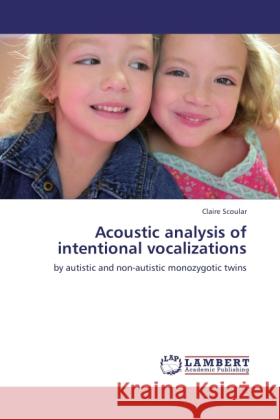Acoustic analysis of intentional vocalizations » książka
Acoustic analysis of intentional vocalizations
ISBN-13: 9783845424392 / Angielski / Miękka / 72 str.
This study focuses on early development communication to help determine autism at an earlier stage. Infant cries have frequently been studied and analysed as a reliable and interesting form of early communication (Corwin, Lester, and Golub, 1996). This study examine the cries of a young infant who is later diagnosed with autism. Her cries will be compared with those of her identical twin sister who does not later get diagnosed with autism. Trevarthen and Daniel (2005) have used home video tapes to analyse dynamic and timing elements the monozygotic twins, one of which later developed autism while the other developed normally. Their research found differences in the children s movement and interactions. In particular, the twin developing autism exhibited a lack of purposeful movement suggesting a core deficit in prospective control. Further studies have concluded that there are differences in the vocal movements of children with autism. A novel acoustic analysis designed by the University of Edinburgh s Perception in Action laboratory was used to examine the cries of the twins.











